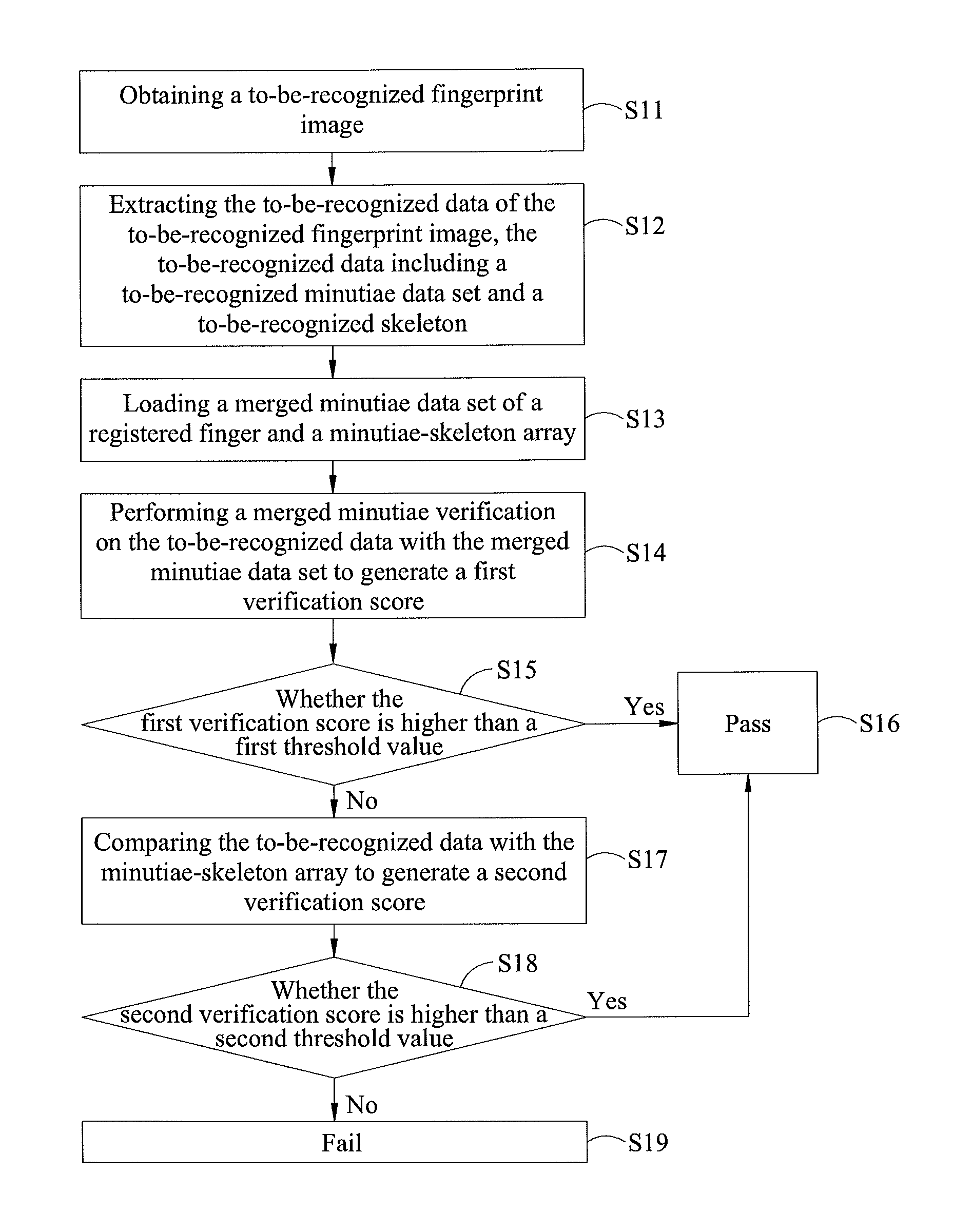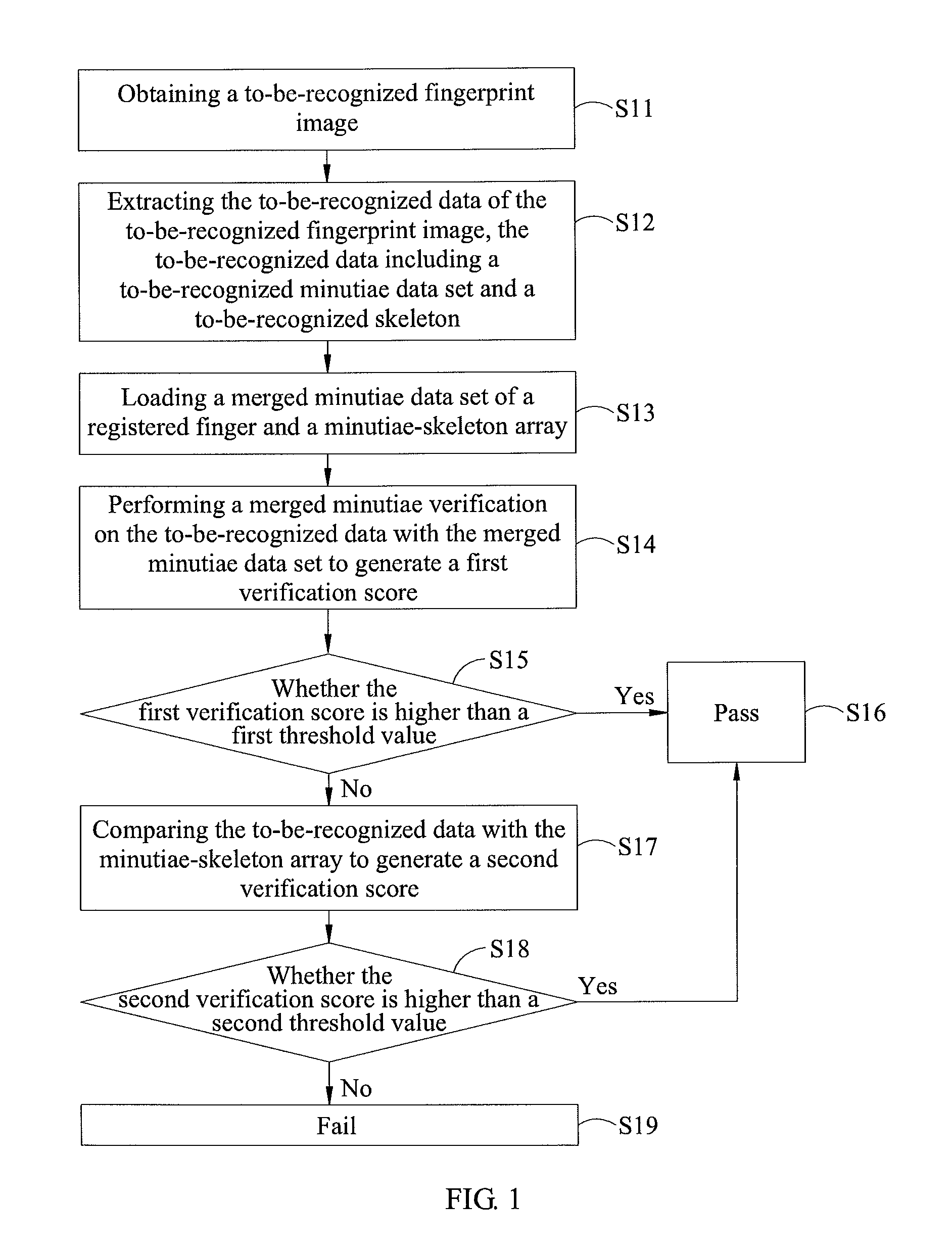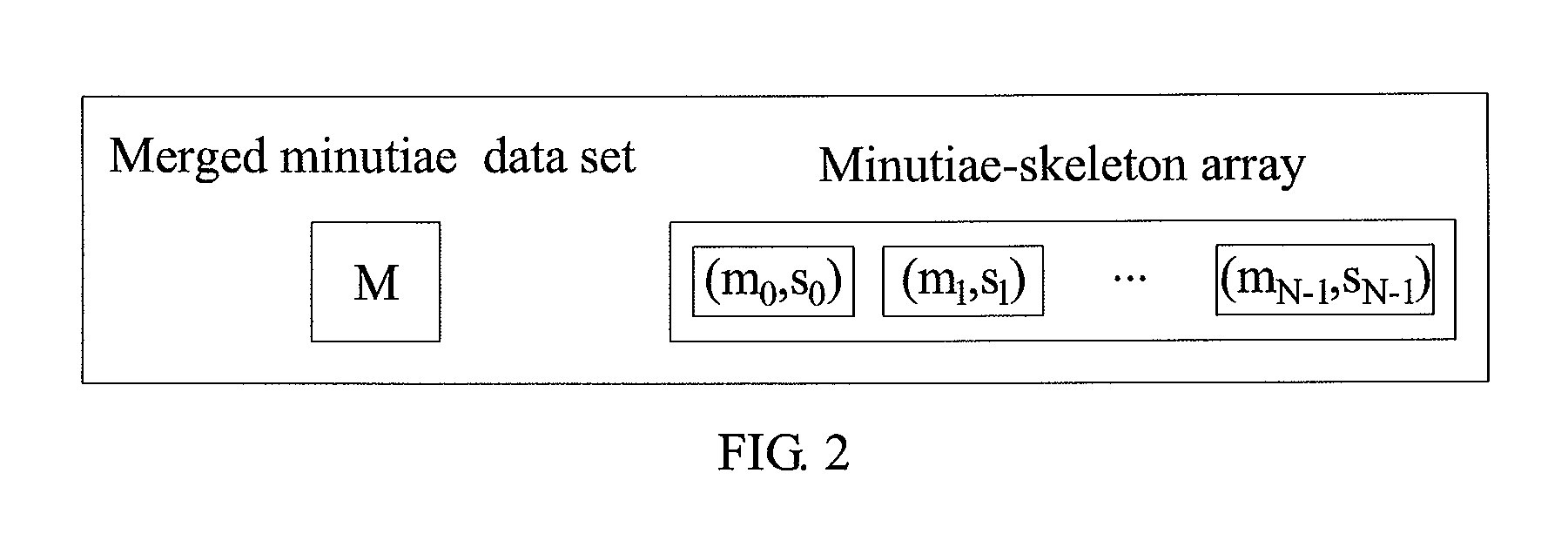Fingerprint recognition method and device thereof
a fingerprint recognition and fingerprint technology, applied in the field of fingerprint recognition methods and devices thereof, can solve the problems of increasing the risk of fingerprint image theft, reducing the reliability of small area fingerprint verification, and increasing the storage space. the effect of data needed to be stored
- Summary
- Abstract
- Description
- Claims
- Application Information
AI Technical Summary
Benefits of technology
Problems solved by technology
Method used
Image
Examples
example 1
[0041]The to-be-recognized fingerprint image V1 is obtained, and the merged minutiae verification is performed on the to-be-recognized fingerprint image V1 with the registered finger R. The first verification score generated from the merged minutiae verification is higher than the first threshold value, therefore, the to-be-recognized fingerprint image V1 passes the verification.
[0042](1) The first threshold value M_TH=70.
[0043](2) The first verification score MM (MR, (mv1, sv1))=150>M_TH.
[0044](3) The verification passes, and the first verification score is 150.
example 2
[0045]The to-be-recognized fingerprint image V2 is obtained, and the to-be-recognized fingerprint image V2 fails to pass the merged minutiae verification. Then, the minutiae-skeleton verification is performed. The minutiae-skeleton array comprises three element; N=3. The second try of the minutiae-skeleton verification on the second element of the array passes the verification since the second verification score for the second element of the array is higher than the second threshold value. Here, Example 2 is explained with reference to FIG. 9 (A) to FIG. 9(C). FIG. 9 (A) is the registered fingerprint image, FIG. 9 (B) is the registered skeleton SR2, FIG. 9 (C) is the registered skeleton SR2 after rotation, FIG. 9 (D) is the to-be-recognized fingerprint image, FIG. 9 (E) is the to-be-recognized skeleton SV2, FIG. 9 (F) is the dilated to-be-recognized skeleton SV2, and FIG. 9 (G) is the overlaid image generated by overlaying the images in FIG. 9 (C) and FIG. 9 (F).
[0046](1) The first ...
example 3
[0051]The to-be-recognized fingerprint image V3 is obtained, which fails to pass the merged minutiae verification performed with the registered finger R, and all of the second verification scores generated from the three tries of the minutiae-skeleton verification N=3 are smaller than the second threshold value, which means the to-be-recognized fingerprint image V3 fails to pass the verification. Here, Example 3 is explained with reference to FIG. 10 (A) to FIG. 10(G). FIG. 10 (A) is the registered fingerprint image, FIG. 10 (B) is the registered skeleton SR3, FIG. 10 (C) is the registered skeleton SR3 after rotation, FIG. 10 (D) is the to-be-recognized fingerprint image, FIG. 10 (E) is the to-be-recognized skeleton SV3, FIG. 10 (F) is the dilated to-be-recognized skeleton SV3, and FIG. 10 (G) is the overlaid image generated by overlaying the images in FIG. 10 (C) and FIG. 10 (F).
[0052](1) The first threshold value M_TH=70, and the second threshold value t_TH=50.
[0053](2) The first ...
PUM
 Login to View More
Login to View More Abstract
Description
Claims
Application Information
 Login to View More
Login to View More - R&D
- Intellectual Property
- Life Sciences
- Materials
- Tech Scout
- Unparalleled Data Quality
- Higher Quality Content
- 60% Fewer Hallucinations
Browse by: Latest US Patents, China's latest patents, Technical Efficacy Thesaurus, Application Domain, Technology Topic, Popular Technical Reports.
© 2025 PatSnap. All rights reserved.Legal|Privacy policy|Modern Slavery Act Transparency Statement|Sitemap|About US| Contact US: help@patsnap.com



